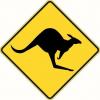I'm obsessing over what Lee Valley block plane to buy so my wife can then give it to me for Christmas....
1 ) The low angle block plane
or
2) The higher priced DX60 block plane
Price is not the problem (at these levels anyway)
I see using this for some shooting as well as end grain as well as the general bzillion odds and end in the shop.
The low angle plane has a wider blade (1/4" wider) but it's thinner than the premium DX60 model (0.125" versus 0.140")
The low angle plane has some interesting options of a tote and knob that would allow it to emulate a #3 smoother, but I doubt that would interest me.
Anyone gone though the same decision or handled each of them and compared them that can help me out here?
Thanks!
Lewis






 Reply With Quote
Reply With Quote


 I couldn't put the cash into his hands fast enough!
I couldn't put the cash into his hands fast enough!



